Audio Recording Boot Camp
Hands-On Basic Training for Musicians
-
Ships in 1 to 2 weeks
Details
Description
SKU: AP.38882
Hands-On Basic Training for Musicians. Composed by Bobby Owsinski. Books and DVDs; Method/Instruction; Pro Audio; Pro Audio Textbook; Reference Textbooks. Boot Camp. Book and DVD. 160 pages. Alfred Music #00-38882. Published by Alfred Music (AP.38882).ISBN 9780739086001. UPC: 038081431901. English.
If you're new to recording and don't know where to begin, or your recordings aren't as good as you'd like them to be, Audio Recording Basic Trainig is here to help. Built around a series of hands-on recording exercises designed to show you how to listen and work like a recording pro, best-selling author Bobby Owsinski reveals the tips, tricks, and secrets to all the different facets of recording---including miking a drum kit, recording vocals, and miking just about any electric or acoustic instrument. See how the pros handle setting up a headphone mix, build a rough mix, and use compression and equalization to make their recordings sing. Learn where, when, why, and how to mic virtually any instrument, and become proficient at finding the right place in the room to record. The book also features an accompanying DVD-ROM filled with lessons specifically developed to take your recording chops to the next level.
Song List (238)
- Why a Separate Mic Amp?
- Microphone Preamp Controls
- Gain, Level, Trim
- Metering
- Input Pad, Pad, Attenuation
- Phase Switch
- High-Pass Filter / Low-Cut Filter
- Phantom Power, 48V
- Instrument Input, Hi-Z, DI
- Setting Up the Mic Preamp
- Exercise Pod: Setting Up the Mic Preamp
- Compressors/Limiters
- Compressor Controls
- Ratio
- Threshold
- Attack and Release
- Gain, Make-up Gain, Output
- Gain Reduction Meter
- Bypass
- Limiting
- Compressor/Limiter Setup
- Equalizers
- EQ Parameters
- A Description of the Audio Bands
- Frequency Band
- DESCRIPTION
- Consequences
- Equalizer Setup
- Subtractive Equalization
- DAW Recording
- Getting Sound into the Computer
- The Computer Interface
- Latency
- CHAPTER 4: RECORDING BASICS
- The Signal Path
- Choosing a Preamp
- Setting the Recording Level
- Headroom
- Exercise Pod: Setting the Recording Levels
- Gain Staging
- Exercise Pod: Proper Gain Staging
- DI Setup
- If It's Distorting
- Compression Basics
- Using the Compressor
- Exercise Pod: Setting Up the Compressor
- How Much Compression Do I Need?
- Equalization Basics
- Using the Equalizer
- Exercise Pod: Checking the Drum Phase
- Getting the Overall Drum Sound
- Panning the Drums
- Tweaking the Drum Sound
- Using the EQ During Drum Tracking
- Exercise Pod: Tweaking the Drum Sound
- Using the Compressor/Limiter During Drum Tracking
- The Recording Drummer
- CHAPTER 7: RECORDING GUITAR AND BASS
- Electric Guitar Recording
- Miking the Amplifier
- Exercise Pod: Recording the Electric Guitar
- Recording the Guitar Direct
- Acoustic Guitar Recording
- Recording Preparation
- Exercise Pod: Recording the Acoustic Guitar
- Electric Bass Recording
- Recording the Acoustic Bass
- CHAPTER 8: VOCAL MIKING TECHNIQUES
- Recording Lead Vocals
- The Scratch Vocal
- Finding the Right Placement in the Room
- Vocals in the Control Room
- Lead Vocal Mic Placement
- Exercise Pod: Recording the Lead Vocal
- You've Got to Hear Yourself
- Getting the Best from a Singer
- Vocal Doubling
- Recording Background Vocals
- Background Vocal Mic Placement
- Exercise Pod: Recording Background Vocals
- Placement in the Room
- CHAPTER 9: RECORDING ACOUSTIC INSTRUMENTS
- Exercise Pod: Finding the Right Placement in the Room
- Acoustic Instrument Mic Placement
- Exercise Pod: Recording Acoustic Instruments
- The Acoustic Piano
- Horns
- Solo Sax
- Solo Brass Instruments
- Horn Sections
- Solo String Instruments
- Percussion
- Recording Drum Percussion
- Recording Hand-Held Percussion
- Other Acoustic Instruments
- CHAPTER 10: RECORDING ELECTRONIC INSTRUMENTS
- Recording Electronic Keyboards
- Fake Stereo
- Recording Acoustic Instruments with Pickups
- Using Compression
- The Acoustic Preamp/DI
- Combined with an Amp
- CHAPTER 11: RECORDING IN STEREO
- The X/Y Configuration
- Exercise Pod: Recording in Stereo
- The ORTF Configuration
- Stereo Accessories
- The Spaced Pair
- Using a Stereo Mic
- CHAPTER 12: THE RECORDING SESSION
- The Basic Track
- Setup
- Where to Place the Players in the Room
- The Talkback Mic
- Leakage
- The Headphone Mix
- Setting Up the Headphone Mix
- Exercise Pod: Basic Tracks
- Personal Headphone Mixes
- Recording Without Headphones
- The Click Track
- Making the Click Cut Through the Mix
- Don't Forget to Record a Tuning Note
- Don't Forget to Record a Count-Off
- Overdubs
- Recording in the Control Room
- Exercise Pod: Overdubs
- Use the Big Part of the Studio
- CHAPTER 13: THE ROUGH MIX
- The Quick Effects Setup
- Building the Mix
- The Drums
- Setting the Levels
- Exercise Pod: Balancing the Drums
- Checking the Drum Phase
- Assigning the Drums to a Group or Subgroup
- The Bass
- Exercise Pod: Balancing the Bass and Drums
- The Vocals
- Exercise Pod: Balancing the Lead and Background Vocals
- Background Vocals
- Guitars
- Exercise Pod: Balancing Guitars
- KEYBOARDS
- Exercise Pod: Balancing the Keyboards
- Loops
- Exercise Pod: Balancing Loops
- CHAPTER 14: THE FINAL RECORDING
- Glossary
- Bibliography
- Index
- Preface
- Welcome to the Audio Recording Basic Training
- CHAPTER 1: MONITORING
- The Listening Environment
- Determining the Listening Position
- Standing Waves
- Acoustic Quick Fixes
- Exercise Pod: Improving the Listening Environment
- Basic Monitor Setup
- Exercise Pod: Speaker Placement
- How to Listen
- Basic Listening Technique
- Exercise Pod: What to Listen For
- How Loud (or Soft) Should I Listen?
- CHAPTER 2: THE MICROPHONE
- Microphone Types
- The Dynamic Microphone
- Dynamic Microphone Characteristics
- Typical Dynamic Microphone Applications
- Dynamic Microphone Examples
- The Ribbon Microphone
- Ribbon Microphone Characteristics
- Typical Ribbon Microphone Applications
- Ribbon Microphone Examples
- The Condenser Microphone
- Condenser Microphone Characteristics
- Typical Condenser Microphone Applications
- Condenser Microphone Examples
- Microphone Directional Response
- Omnidirectional
- Cardioid
- Hyper-Cardioid
- Figure Eight
- Proximity Effect
- Microphone Controls
- High-Pass or Rolloff Filter
- -10 or -20dB Pad
- Pattern Selector
- Microphone Accessories
- Pop Filters
- Shock Mounts
- Exercise Pod: The Microphone
- Direct Boxes
- Direct Box Types
- Amplifier Emulators
- CHAPTER 3: BASIC RECORDING GEAR
- The Microphone Preamplifier
- Exercise Pod: Using the Equalizer
- The Magic High-Pass Filter
- Exercise Pod: Using the High-Pass Filter
- The Principles of Equalization
- CHAPTER 5: MICROPHONE PLACEMENT BASICS
- Microphone Technique 101
- Choosing the Best Place in the Room
- Exercise Pod: Microphone Placement 101
- Choosing the Right Mic
- The Secret to Mic Placement
- Phase Cancellation: The Sound Destroyer
- Acoustic Phase Cancellation
- The 3 to 1 Principle
- Electronic Phase Cancellation Audio Recording Basic Training
- Checking Phase
- Exercise Pod: Checking Phase
- Checking Phase by Listening
- CHAPTER 6: RECORDING THE DRUMS
- The Keys to a Great Sounding Drum Kit
- The Tuning Technique
- Exercise Pod: Tuning the Drums
- Tuning Tips and Tricks
- Snare Tuning Tips
- Kick Drum Tuning Tips
- Tom Tuning Tips
- Cymbals Tips
- Miking the Individual Drums
- Miking the Bass Drum
- Exercise Pod: Miking the Individual Drums
- The Subkick Mic
- Miking the Snare Drum
- Snare Drum Bottom Head Miking
- Miking the High-Hat
- Miking the Toms
- Miking the Cymbals
- Overhead Position Two
- Miking the Room
- Sound Check
- Individual Drum Sound Check
- Exercise Pod: Drum Sound Check
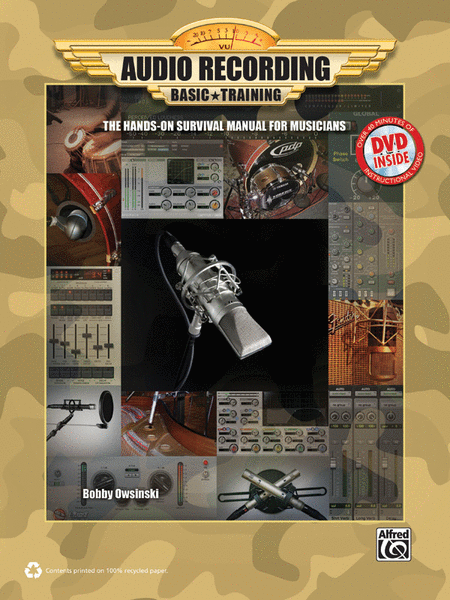
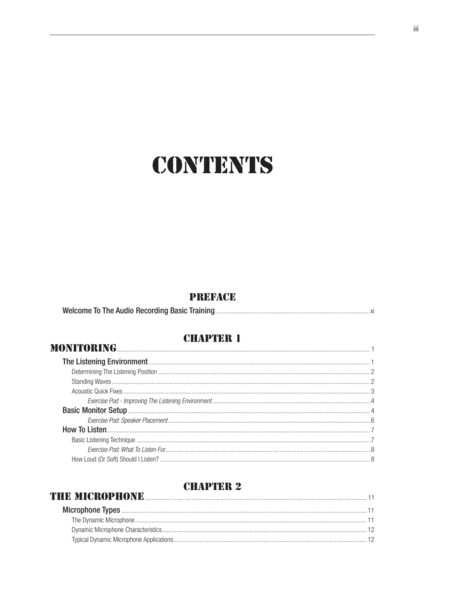
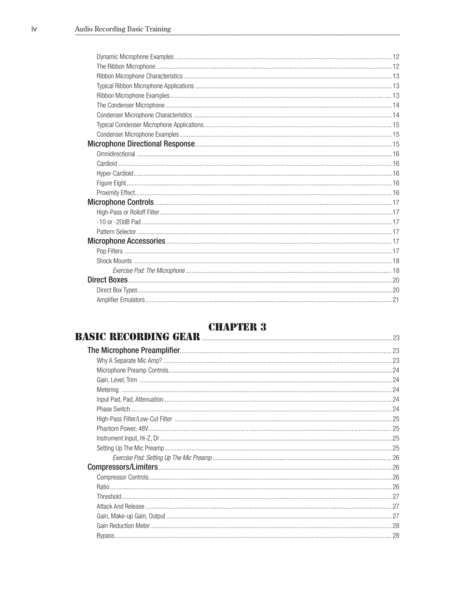
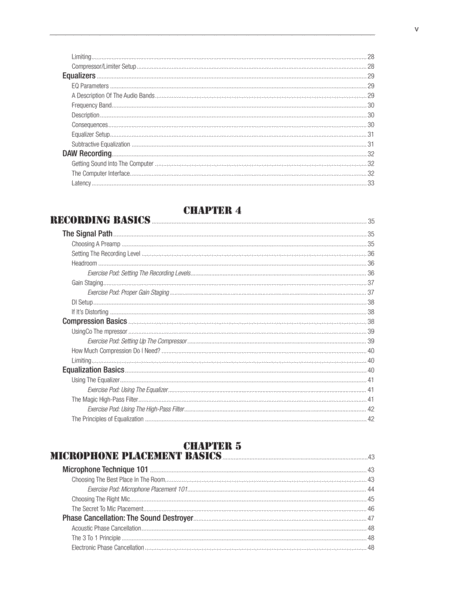
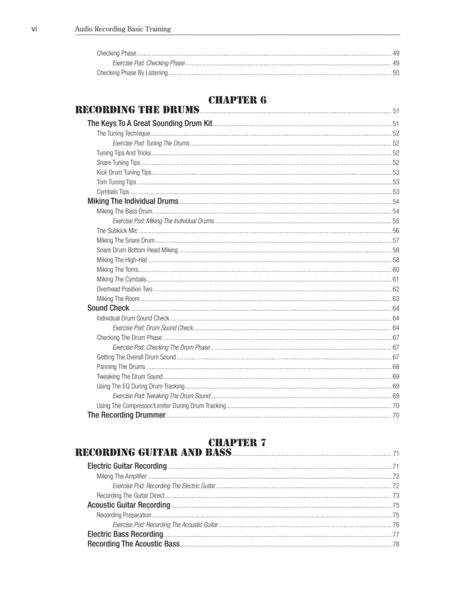
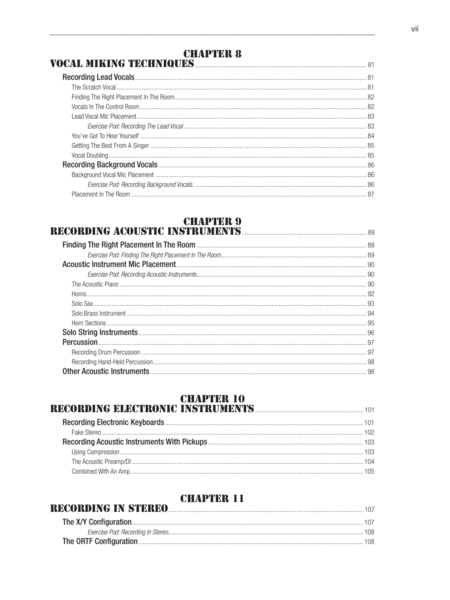
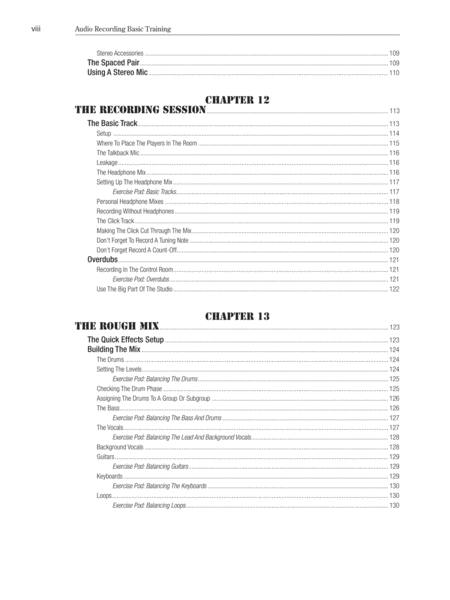
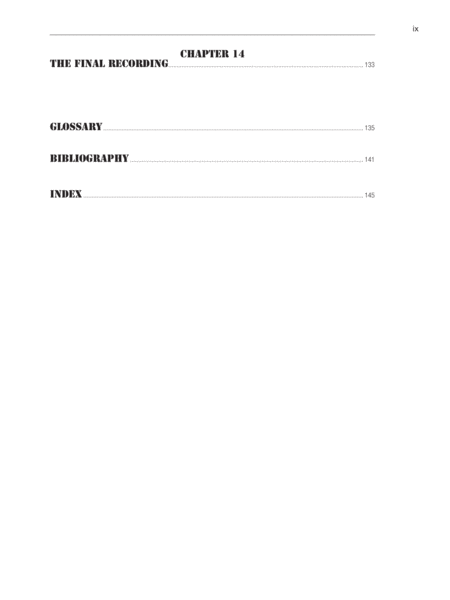
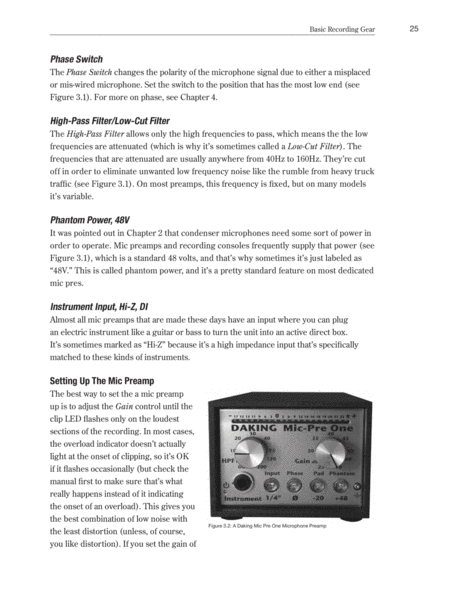
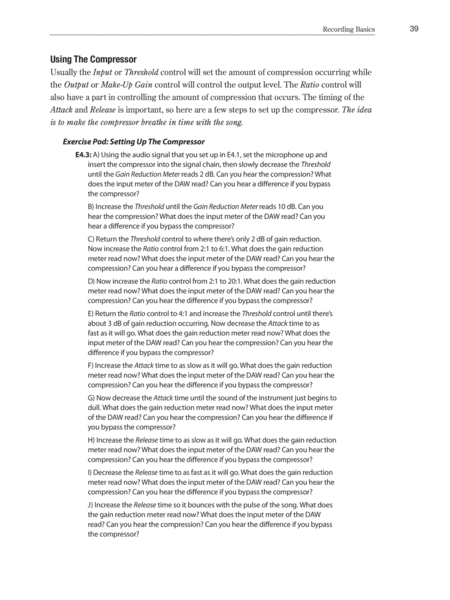
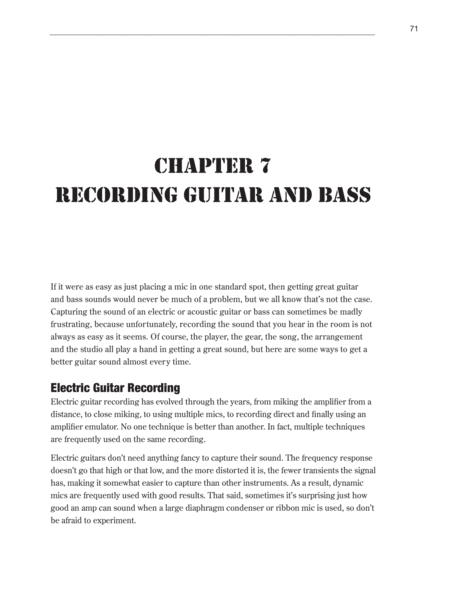
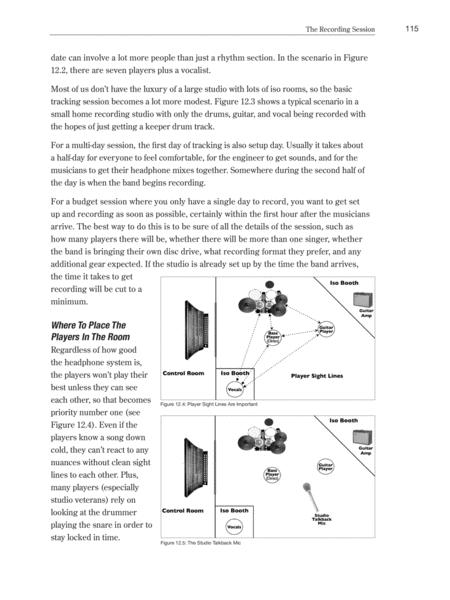
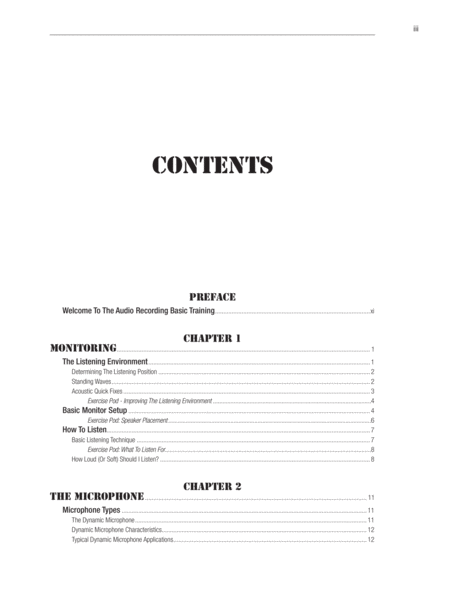
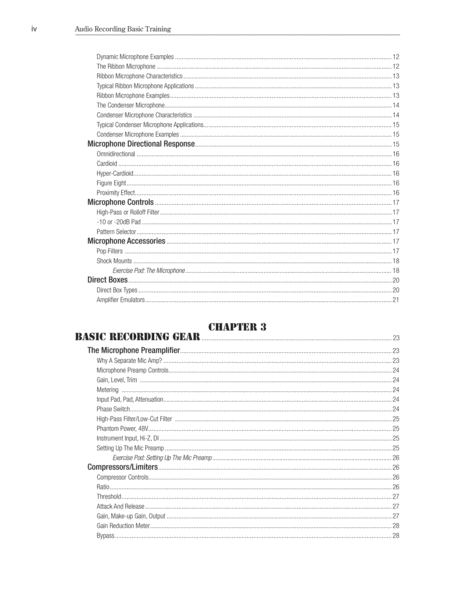
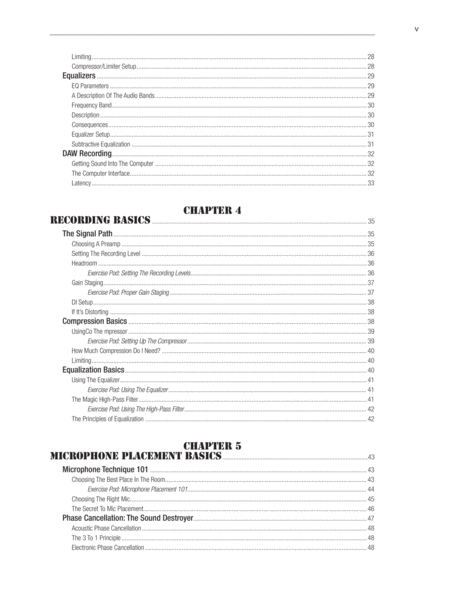
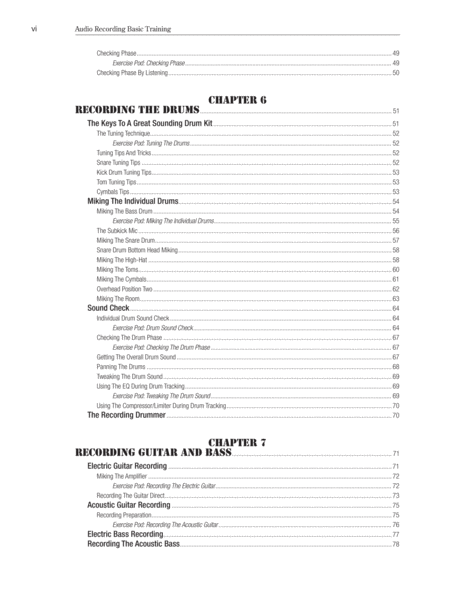
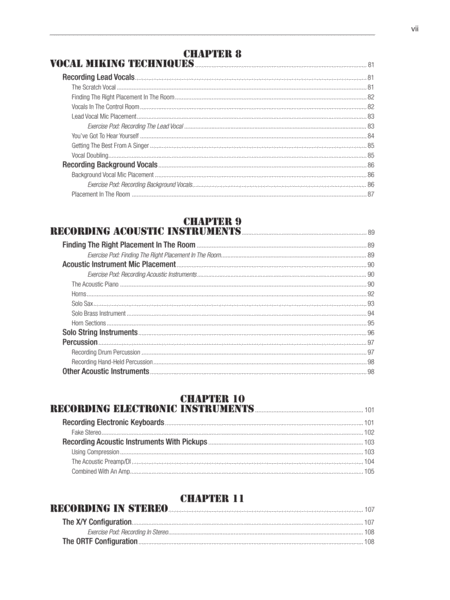
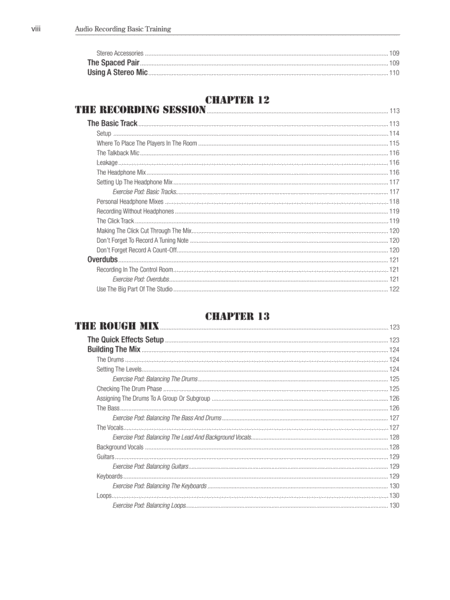
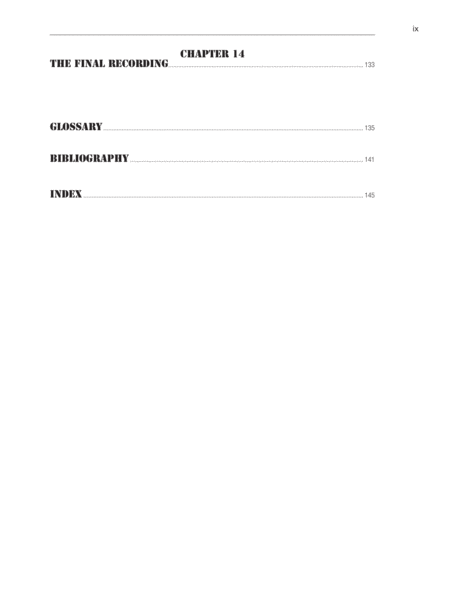
 Share
Share